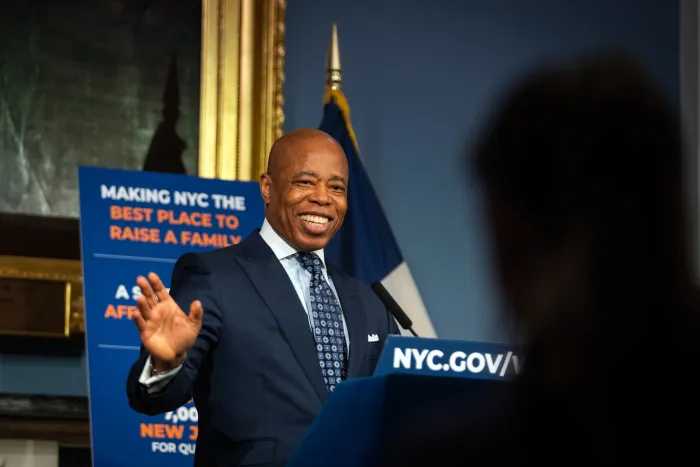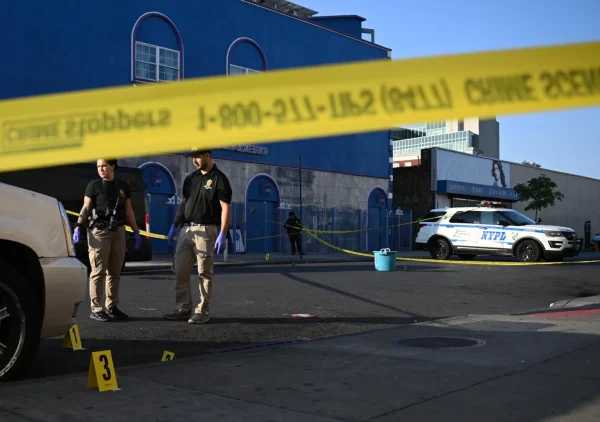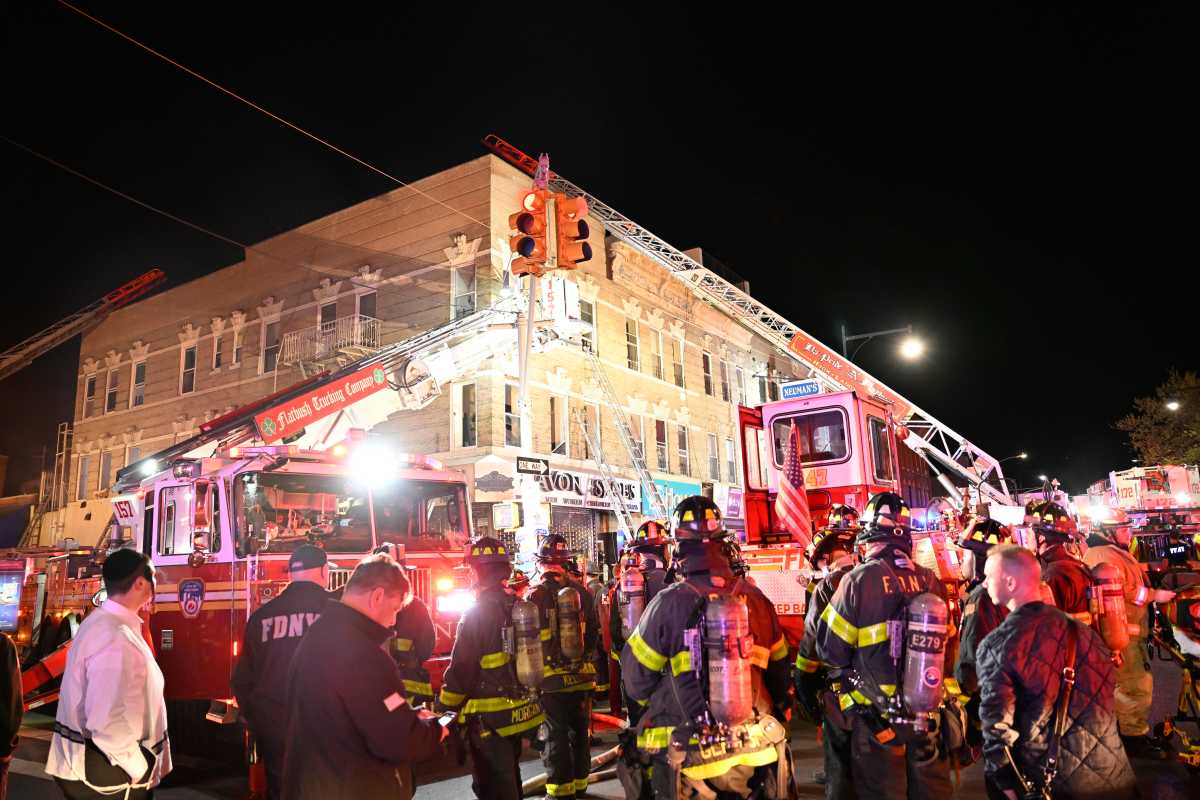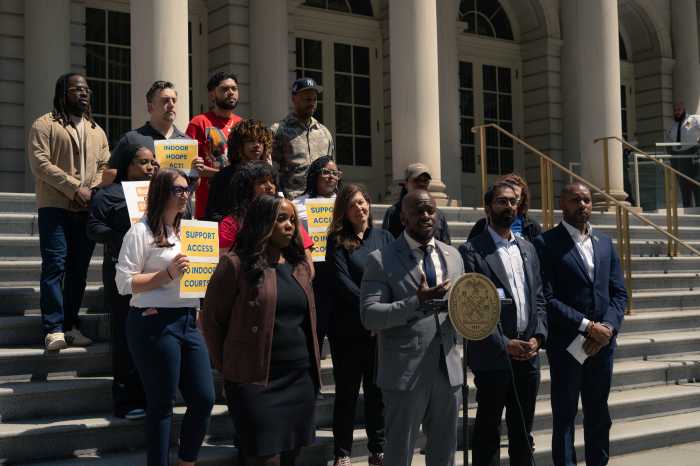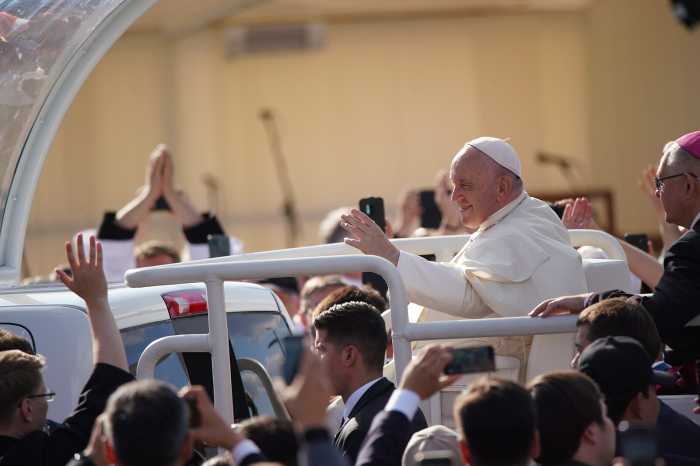
The Transportation Security Administration tested two machines at Penn Station on Tuesday aimed at detecting suicide vests and other explosive threats, the first such test in New York City.
The equipment, known as a standoff explosive detection unit, triggers an alarm if someone wearing an improvised explosive device, or IED, passes by the machine. One model is designed to be pointed at an entrance or stairway and shows a dark spot where something blocks body emissions (like heat, for example), while the other is designed to focus on a particular subject and features a bar that turns red if something is detected. The second device can be controlled using a joystick.
“It is looking for anything that would block the normal body emissions,” said Lisa Farbstein, a spokeswoman with the TSA, adding: “Part of the value of the machine and one of the advantages is that it can be random, and that random factor is huge in terms of deterring terrorists.”
While this is the first test of the technology in the city, it was used at the Secaucus Junction train station in New Jersey during the Super Bowl in 2014, Farbstein said. It was also tested in December inside the Los Angeles Metro, the same week a man set off a pipe bomb in an underground tunnel connected to the Port Authority Bus Terminal in Manhattan.
The devices will be tested at Penn Station — operated by Amtrak police officers — through the end of the week, Farbstein said.
The equipment uses millimeter wave technology, similar to circular scanners deployed at many airports, she said. It does not emit any radiation or interfere with medical devices, she added.
“They’re really targeting the torso of an individual, [looking for] something that would be of a catastrophic nature,” Farbstein said.
Both models are mobile and can be moved to different entrances of the station, Farbstein said. However, this equipment is not yet available for agencies to purchase.
In December, Sen. Chuck Schumer (D-N.Y.) called on the TSA to expedite the rollout of this technology, saying he’d like to see it installed at every subway station entrance as soon as the technology is perfected and that Congress would be willing to pay for related installation and testing costs.
On Monday, Schumer praised the TSA for bringing the technology to New York City “at long last and not a moment too soon.”
“When I made the push to bring this technology to New York City, it was because we need to put it on the fast-track and we need to perfect it, because if it works, this is where we want it: in New York City’s busiest transit hubs,” Schumer said in a statement.
Maria Haberfeld, a professor of police science and co-director of the NYPD police studies program at John Jay College of Criminal Justice, said monitoring this technology requires a lot of concentration and focus, and its effectiveness is dependent on the trained people using it.
“Technology itself is only as good as the people who are monitoring and responding,” she said. “You have to have many people who are rotating every few hours. This is the key to success with this technology: manpower.”
Haberfeld said most counterterrorism efforts and technologies are focused on minimizing the potential casualties of an attack. And this one is no different.
“The whole thing with counterterrorism technology is how many casualties they’re going to prevent and mitigate and not about [the] complete elimination of casualties,” she said. “We just cannot block all the targets we have — we can secure certain targets better than others.”
A spokesman for the Port Authority said the agency plans to look at the technology soon. A spokesman for Amtrak said in an email that the technology “if found effective, might be utilized in the future,” and said the company would work with the TSA to determine any future testing.
A representative for the NYPD did not respond to an email requesting comment.
Jonathan Askin, a professor of clinical law at Brooklyn Law School, said the technology is promising when it comes to civil liberties.
“It’s essentially irrelevant to the person,” he said. “On paper it looks like it’s a move in the right direction. I think it’s less of a potential civil liberties, civil rights violation if we’re imposing the invasion on everyone.”
Askin said the question will be what would happen if there was a false positive and some other contraband, like drugs, was found — while the answer was not immediately clear.
New Yorkers passing through Penn Station on Tuesday thought the equipment was a good idea, valuing the potential to keep pedestrians safe.
Upper East Side resident Michael Cohn, 55, said if it can prevent possible terror attacks and not inconvenience anyone, it’s a win-win.
“It’s safety over privacy, I feel, in the city,” he said. “Circumstances that have happened in the last 10 to 15 years mean this is . . . a necessary evil.”
With Vincent Barone, Anne Ehart




